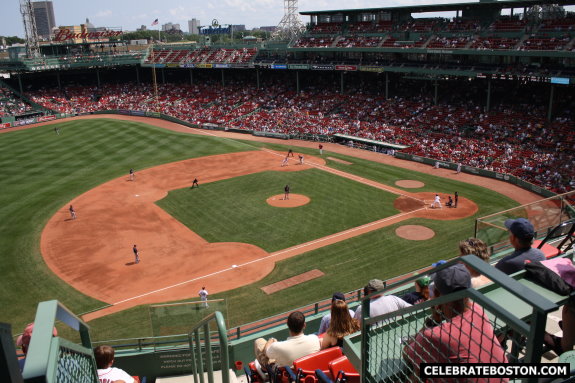 |
Fenway Park

Fenway Park, home to the esteemed BostonRed SoxMajor League Baseball team, is a cherished landmark in Boston. This iconic ballpark, originally completed in 1912 and later reconstructed in 1934, holds a special place in the hearts of countless passionate Boston sports fans. Delving into the rich history of Fenway Park, let's explore some of the fascinating facts that make it an essential destination for any baseball enthusiast.
The Red Sox, locally known as the "Sox," took on their name in honor of the 1870's Boston Red Stockings, a team that eventually evolved into the Boston Braves and are now the Atlanta Braves in the National League. The Red Sox have been a force to be reckoned with, boasting an impressive collection of World Series Championships. As of 2023, they have triumphed in 1903, 1912, 1915, 1916, 1918, 2004, and 2007, with numerous appearances in post-season play, etching their name in baseball history.
One of the most iconic features of Fenway Park is the "Green Monster," a towering 37-foot-high left-field wall. For many years the Green Monster contained a distinctive hand-operated scoreboard, where number signs were manually hung during each game, the Green Monster stands as a testament to the ballpark's storied past. However, there are other places at Fenway Park that hold a unique significance, the "Red Seat" and "Pesky's Pole."
Located in the right-field bleachers is the "Red Seat." It is easily distinguishable by its bright crimson color amidst a sea of green. This particular seat marks the spot where, on June 9, 1946, the legendary Ted Williams launched a colossal home run that soared an estimated 502 feet, making it the longest home run ever recorded at Fenway Park. To honor this incredible feat, the seat was painted red (and later replaced with red plastic) and has since become a cherished symbol of the ballpark's illustrious history.
Adjacent to the Red Seat stands "Pesky's Pole," the right-field foul line pole, adding to the park's unique character. If a player manages to strike the pole with a hit, it is counted as a home run. Johnny Pesky, a legendary Red Sox player who batted over .300 during his career but hit relatively few home runs, had one of his game-winning home runs smash the pole, which cemented its endearing nickname in the 1980s.
For many years, Fenway Park was overshadowed by the "Curse of the Babe," a local term linked to the Red Sox's inability to win a World Series title from 1918 until 2004, a staggering 86-year drought. The curse was said to have stemmed from the trade of the legendary Babe Ruth to the New York Yankees in 1919, following the impressive 1918 season. In particular, the 1967, 1975, 1978, 1986, and 2003 seasons proved to be deeply disappointing for fans of the Boston Red Sox. Despite high hopes and promising performances during these years, the team was met with heartbreak and missed opportunities. However, the resilient Red Sox put an end to this curse in 2004 by clinching the World Series title, marking a historic moment for the team and their devoted fans.
If you are a sports lover or a curious traveler, Fenway Park offers a one-of-a-kind experience. Even during the regular season, you can immerse yourself in the park's storied past by taking one of the Fenway Park tours. The tours begin at the souvenir shop located across the street from the park on Jersey Street, promising an unforgettable journey into the heart of baseball history.
Fenway Park stands as a timeless symbol of baseball's enduring legacy. From its legendary World Series victories to the captivating Green Monster and the tales of remarkable players, this historic ballpark continues to inspire the hearts of baseball enthusiasts worldwide. Whether you're a die-hard fan or a casual observer, Fenway Park is a must-see attraction that promises an unforgettable experience during your visit to the remarkable city of Boston.
Related Information
CONTACT INFORMATION:
Fenway Park
4 Jersey Street, Boston, MA 02215
877.RED.SOX9
redsox.com (team)
boston.redsox.mlb.com (tours)
Nearest MBTA: Kenmore Station (Green Line)
Walking Directions: Exit the station and walk up Brookline Avenue. Kenmore Square has several crossroads. Brookline Avenue crosses over David Ortiz Bridge on the west side of the square. Fenway Park is one long block away over this bridge on the left.